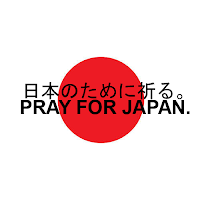Some of you may remember that I have friends from Tohoku. One of my friend informed me that Miyagi Prefecture, which may have been hit hardest, organized their "alumni meeting" to decide what they can do. Their decision was to create an account so that they can "avoid all administrative costs and every cent would be sent directly to the account the Miyagi Prefecture Government."
If you would be kind to participate in this initiative, please send your donation to:
100 Overlook Terrace Apt#816
New York, NY 10040
Attn: Ryo Abe
* Please make your check payable to “The Japanese American Association of NY, Inc.”
(The Japanese Association of NY, Inc. is a tax exempt organization. It is classified under Internal Revenue Codes as 501(c) (3). If you need a receipt for your donation, please indicate upon payment. The receipt will be sent from The Japanese American Association of NY, Inc. after 4/20.)
* If you have any questions or need any other information, please feel free to contact at:
ny-miyagikenjinkai2@hotmail.com
You can view the coverage of the Miyagi Alumni Meeting, along with my friend, courtesy of FCI, Inc. (The video is in Japanese)
***
Of course, you can also make donation through the American Red Cross, which will provide relief for other heavily affected Prefectures such as Iwaté and Ibaraki.
***
Lastly, my friend Mr. Urbansaké announced that there is a donation program in place designed to specifically aid Japanese Saké Brewers.
***
Again, no amount of help is too small - thank you for your support!






























































